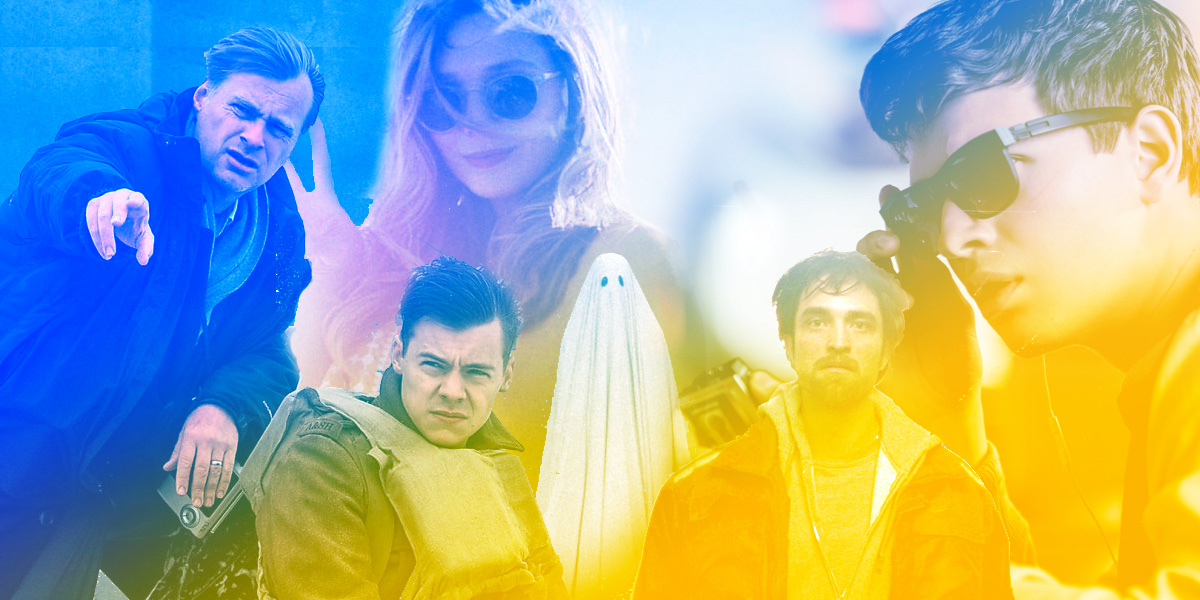We’re right on top of things calendar-wise, right?…
A little late to the party, but, it’s become a recurrent trend every summer for journalists to look back at the movies that were released and, well, complain. The gist of some articles would be “don’t you remember the days when they used to release great movies in the summer”? 1982 and/or 1984 are usually mentioned and, in all honesty, those were pretty great years. In fact, they’re pretty much known as the peaks of summer movie seasons. This year, AFI is running a 1982 retrospective and, of course, a whole segment focuses on that incredible summer full of cinematic treats. Just look at the films that were released between May and August of that year: “E.T,” “Blade Runner,” “Poltergeist,” “Star Trek II: The Wrath of Khan,” “John Carpenter‘s The Thing,” “An Officer and a Gentleman,” “Fast Times at Ridgemont High,” “Porkys,” “Diner,” “Conan the Barbarian,” and “Tron.” Impressive.
Well, watch your back 1982 and 1984 because the summer movie season we just witnessed in 2017 will no doubt become stiff competition for your title. What’s astounding about this year’s summer movies is just how good they were despite people’s misconceptions that we are somehow living in this kind of cinematic doomsday filled with one dreadful movie after another being released on a weekly basis. Quite the contrary, almost every weekend this summer saw the release of a cinematic delight, with films by Christopher Nolan, Edgar Wright, Kathryn Bigelow, Steven Soderbergh, Sofia Coppola, the Safdie brothers, Bong Joon-Ho and Ridley Scott to name a few. So embrace it, people. Relish in the cinematic treats we got this year, it’s a just cause for celebration. The following are 18 great movies that were released between the months of May and August.
 “Dunkirk”
“Dunkirk”
Christopher Nolan‘s piece-de-resistance is delivered to us like a full-blown symphony. It certainly is the riskiest cinematic endeavor he’s ever attempted, a 107-minute war movie that shows more than tells. The dialogue is sparse, supposedly the final screenplay he ended up shooting with was his shortest ever, at just 76 pages, and rumor has it that it came to about 10 or so pages of dialogue. “Dunkirk” and its silent film-inspired images make it feel like a close relative to Sergei Eisenstein‘s “Battleship Potemkin.” Eisenstein and Nolan’s films are both staggering, visceral cinematic treatises on image and sound. Both convey a historical event through the use of brilliantly edited images and multiple narratives happening on-screen. The lack of dialogue makes “Dunkirk” almost minimalistic in style, a rare feat in today’s blockbuster-stuffed landscape. The sheer fact that a studio would invest in such an audacious artistic statement like “Dunkirk” does bring a glimmer of hope for the future of mainstream cinema. It’s quite simply the best movie we saw all summer.
 “The Big Sick”
“The Big Sick”
All hesitations you might have had about this Judd Apatow-produced film were thrown out the window once Kumail Nanjiani appeared in Michael Showalter’s millennial romantic comedy “The Big Sick.” Najiani, known for his supporting role in HBO’s “Silicon Valley,” doesn’t need to act as much as just be himself on-screen. The film is a touching and heartfelt personal account of his real-life relationship with his wife Emily Gordon (as played beautifully by Zoe Kazan), which was initially troubled by an undisclosed illness which left her hospitalized in a coma. “The Big Sick” is one of the best romantic comedies to come around in ages, a future classic of the genre. Sometimes the movie Gods align and everything in a production ends up working; the actors, the screenplay, the director, the photography. An effortlessly great film is born in the process. This is the best Judd Apatow movie and it wasn’t even directed by Apatow.
 “Columbus”
“Columbus”
Jin (John Cho), A Korean-born man arrives in Columbus, Indiana, one of the great architectural cities in the world, where his legendary architect father is in a coma. He meets Casey (Haley Lu Richardson) a young enthusiast of his father’s, who wishes to pursue her dreams outside of the small city but is burdened to take care of her recovering addict mother. The bond these two lost souls create in this magical city of Architectural heaven is not just touching but has a surreal aspect to it that makes the viewer feel as if they just got lost in a dream. Columbus, Indiana’s famous modern architecture is featured prominently throughout as Casey guides Jin to her favorite spots. Their corresponding conversations, filled with cigarette smoke, gradually become more detailed and more revealing. Director Kogonada, in his impressive debut, conveys emotion through site and sound. He turns out to be a master of not just visual setting, but of conversational filmmaking, and his “Columbus” might just be a masterpiece.






Great list (except for wonder woman of course) I loved It comes at night, Dunkirk and Okja and I’m looking forward to watch the rest.